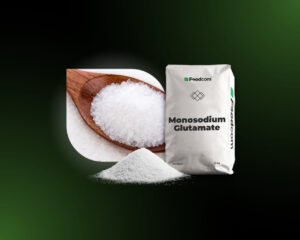- The methylsulfonylmethane (MSM) market is growing, reaching $2.14 billion by 2030.
- L-carnosine is in growing demand due to its antioxidant and anti-aging properties.
- Maersk CEO warns of further shipping disruptions in the Red Sea, affecting global logistics costs.
Hello Partners!
Welcome back to our Newsletter!
In this edition of our newsletter, we discuss the latest trends in nutritional supplement markets and current logistical challenges. We cover the dynamic growth in demand for MSM, L-carnosine and L-glutamine, as well as the impact of rising freight costs on amino acid prices from China. In addition, we look at the impact of shipping disruptions in the Red Sea that could affect global supply chains.
Let’s take a look at what else is happening on the market!
Products of the Week!
Methylsulfonylmethane (MSM)
The methylsulfonylmethane (MSM) market is forecast to grow rapidly, reaching $2.14 billion by 2030, with an annual growth rate of 3.68%. MSM is an organic sulfur compound mainly used in dietary supplements, cosmetics, and animal feed. The increase in demand for MSM is driven by the rising incidence of arthritis, back pain and neck pain, which is boosting demand for products that relieve inflammation and pain.
MSM price volatility is mainly driven by raw material costs and changing consumer preferences. Increasing health awareness and government initiatives to promote healthy lifestyles are contributing to market growth. The largest demand for MSM is observed in the North American, European and Asia-Pacific regions.
L-Carnosine
The L-carnosine market is growing rapidly, with a projected annual growth rate of 6.28% to reach $61.84 million by 2031. L-carnosine is a popular ingredient in dietary supplements, used mainly for its antioxidant and anti-aging properties. The largest demand comes from the health sector, including memory support, skin support, and autism and diabetes treatment.
Market growth is being fueled by increasing health awareness, especially in Asia-Pacific regions, where demand for natural and organic supplements is growing. Countries such as Japan and South Korea, with rapidly aging populations, are seeing an increase in demand for anti-aging products. In Europe and North America, advanced health infrastructure and growing consumer awareness are also supporting market growth
L-glutamine
The L-glutamine market will reach $140.2 million in 2024, with a projected annual growth rate of 5.5% through 2031. Growth is mainly driven by rising demand for supplements that support digestive and immune health and increased health awareness among consumers. The greatest demand is coming from North America, where the growth of gyms and sporting events is boosting demand for supplements that support muscle recovery.
In Europe, especially in the UK, a growing health trend and an aging population are contributing to market growth, while in the Asia-Pacific region, especially China, rapid growth is due to a growing fitness culture. L-glutamine is widely used in powder form, valued for its versatility, long shelf life and cost-effectiveness, and in the pharmaceutical and nutraceutical industries for its health properties.
NEWS
Maersk CEO warns of prolonged red sea shipping disruptions
Vincent Clerc, CEO of Maersk, has warned customers that Iran-backed Houthi attacks will likely continue disrupting Red Sea shipping into the third quarter of 2024 and beyond. Despite U.S.-led efforts to combat Houthi piracy, the insurgents have intensified their attacks, leading Maersk to reroute vessels around Africa, significantly increasing costs and reducing cargo capacity. Clerc emphasized that the ongoing security risks have deeply affected logistics operations and urged governments to improve Red Sea security, highlighting the potential for these disruptions to reignite inflation in regions like Europe.
Rising prices of Lysine and Threonine in china’s export market
FOB China prices for lysine and threonine have increased this week, while container freight rates remain high, driving up export costs to the USA and Europe for late Q3 and Q4 2024. The local market in China for these amino acids is stable to weak, but strong export demand is prompting buyers to secure Q4 supplies. Methionine prices are stable, and tryptophan and arginine, despite previous declines, are showing signs of stabilizing at low levels. The increase in freight rates offsets earlier price drops, maintaining market equilibrium.
![Market trends you can’t ignore: MSM, L-Carnosine & L-Glutamine! [55th Edition Foodcom ADDITIVES Newsletter] Market trends you can’t ignore: MSM, L-Carnosine & L-Glutamine! [55th Edition Foodcom ADDITIVES Newsletter]](https://foodcom.pl/wp-content/uploads/2024/06/Foodcom_SA_Additives_Newsletter_Amino_Acids-1520x760.jpg)







